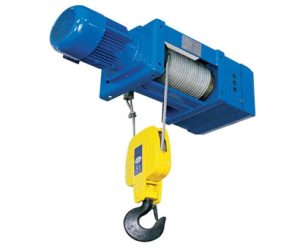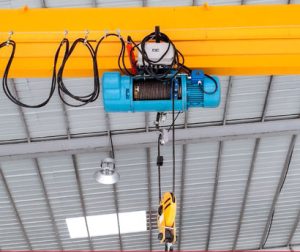什么是按钮吊坠控制电动葫芦?
简单地说, it is an 电葫芦 (用于提升和降低重物的装置) 由手持控制单元操作, known as a pendant. This pendant is connected to the hoist by a flexible cable and features clearly marked buttons for each function. Unlike stationary controls or remote radio systems, the pendant control is physically tethered, allowing the operator to control the hoist from a short, safe distance while maintaining a clear view of the load.
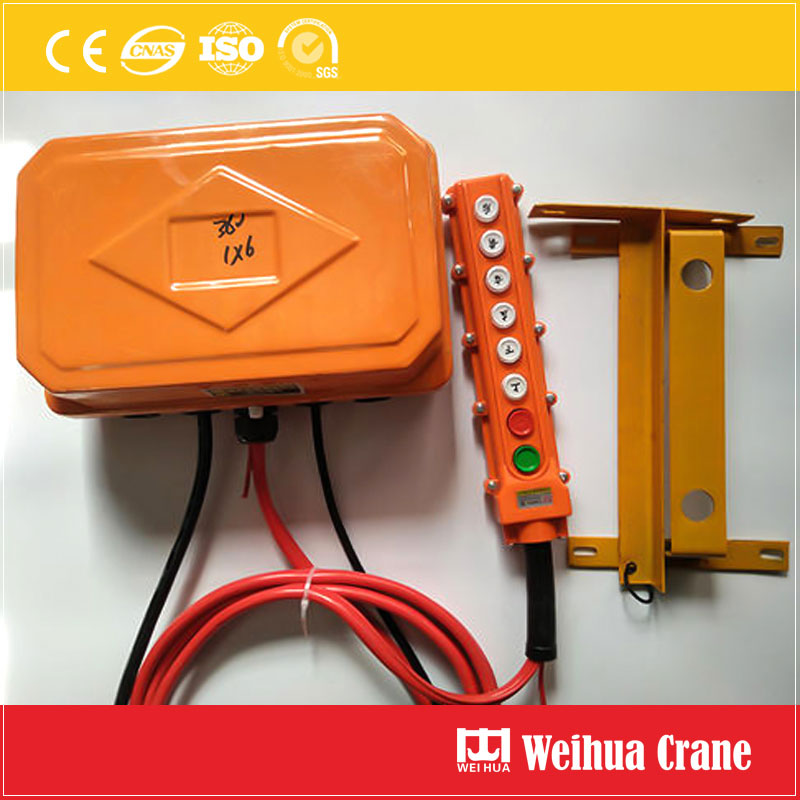
Key Components and How It Works
- 1. 电动葫芦: This is the main unit, typically consisting of an electric motor, a gear reduction system, a drum or chain wheel for the lifting medium (wire rope or load chain), and a brake. The motor provides the power, which is translated into lifting force through the gears.
- 2. The Lifting Medium: Hoists can use either high-strength alloy steel chain or durable wire rope. Chain hoists are generally more compact and suitable for lower capacities and slower speeds, while wire rope hoists can handle higher capacities and faster lifting speeds over greater heights.
- 3. The Push Button Pendant: This is the operator’s direct interface with the hoist. It is a rugged, often oil-resistant, and impact-resistant handheld box. Its simple design features large, color-coded buttons for intuitive operation:
- UP Button (Often Green or Labeled ↑): Energizes the motor to lift the load.
- DOWN Button (Often Red or Labeled ↓): Lowers the load.
- Additional Buttons: Many pendants also include buttons for East/West travel (on a motorized trolley) or multiple lifting speeds (例如。, a slow, precise “micro” speed).
Pressing a button completes an electrical circuit, sending a low-voltage signal to the hoist’s contactor, which then engages the main motor to perform the desired action. Releasing the button immediately cuts power and engages the brake, holding the load securely in place.
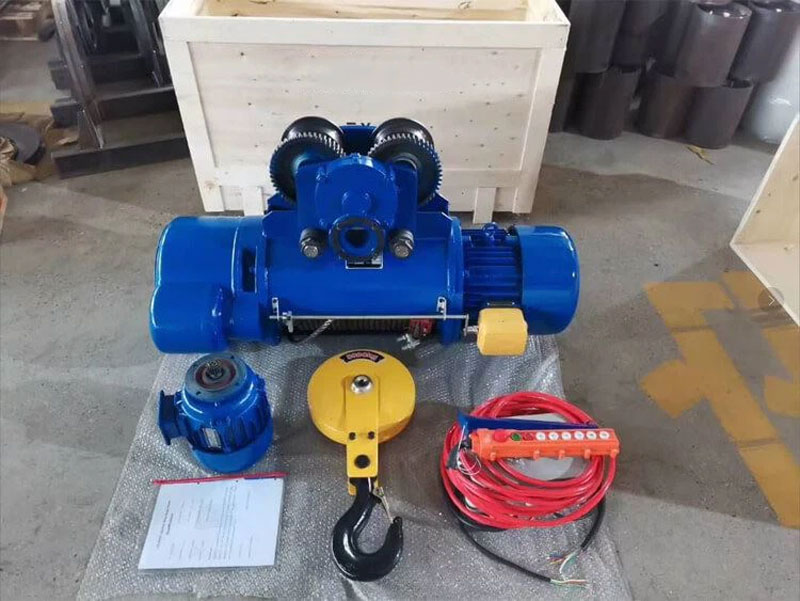
The Unmatched Advantages of Pendant Control
Why is this control method so widely preferred?
- 1. 增强的安全性: The tethered design is a key safety feature. It ensures the operator is in close proximity to the load, promoting better visibility and awareness of the surroundings. This minimizes the risk of accidents caused by unauthorized or distant operation.
- 2. 精准控制: Operators have direct, immediate control over the hoist’s movements. This allows for incredibly precise load positioning, which is essential for aligning machinery, fitting components, or working in tight spaces.
- 3. Durability and Reliability: Pendant controls are designed for tough industrial environments. They are built to withstand drops, exposure to oils, chemicals, and general shop-floor abuse. Being hardwired, they are not subject to the signal interference or battery failure issues that can plague wireless remotes.
- 4. Simplicity and Ease of Use: The control scheme is intuitive and requires minimal training. The tactile feedback of pressing a button provides confidence that the command has been issued.
- 5. Cost-Effectiveness: Compared to more complex radio remote control systems, pendant-controlled hoists are generally more affordable both in initial purchase price and maintenance.

安全第一: Essential Practices
While designed for safety, proper operation is non-negotiable:
- 1. Never bypass safety features: Do not tie down or hold buttons in the on position.
- 2. Inspect regularly: Check the pendant, control cable, and buttons for damage before each use.
- 3. Stay clear of the load: Use the pendant to operate from a safe distance, never standing under a suspended load.
- 4. Know the capacity: Never exceed the hoist’s rated load capacity, clearly marked on the unit.
- 5. Formal training: Only trained and authorized personnel should operate the equipment.
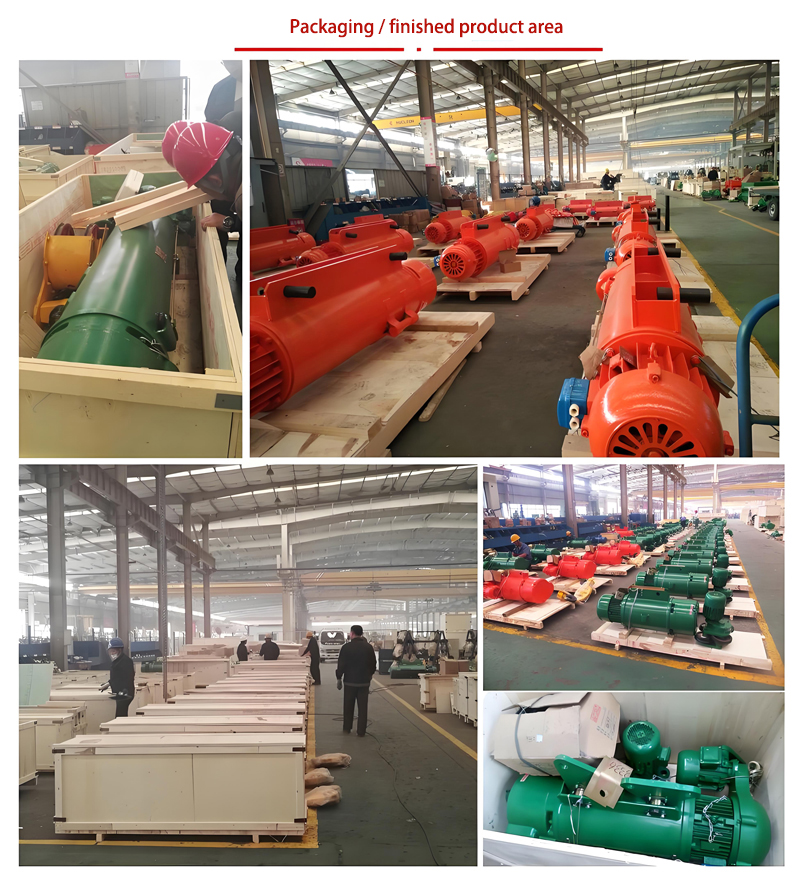
Applications Across Industries
The push button pendant control electric hoist is incredibly versatile. You will find it in:
- 1. 制造业: 起重发动机, metal sheets, and assembly components.
- 2. Warehousing and Logistics: Loading and unloading heavy goods.
- 3. 建造: Positioning structural steel, HVAC units, 和建筑材料.
- 4. Automotive Repair: Hoisting engines, 传输, and vehicle bodies.
- 5. Shipbuilding and Repair: Handling large ship parts and machinery.
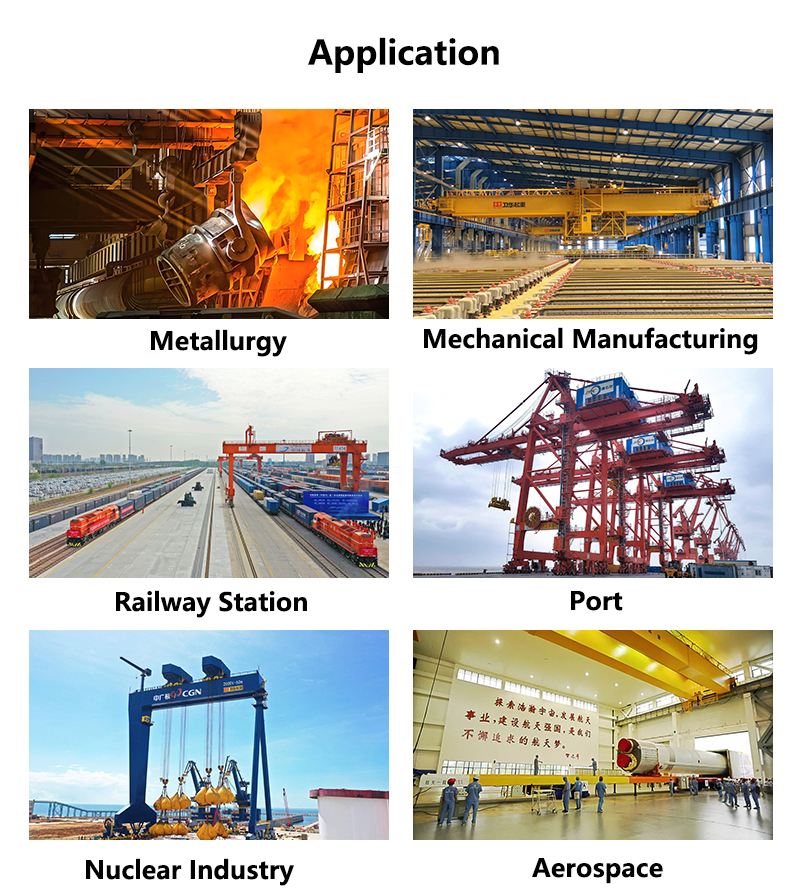
The push button pendant control electric hoist represents a perfect synergy of human skill and mechanical power. Its simple, 强壮的, and safe design has made it a timeless and trusted solution for material handling challenges across the globe. For any task that requires lifting heavy loads with control, 精确, 和安全, this tool remains an unbeatable choice, proving that sometimes the simplest solutions are the most effective.






